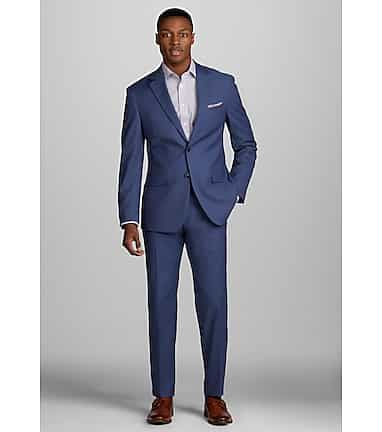Comprehending the Tailoring Refine: From Textile Option to Last Fitting for the Ideal Closet
The tailoring procedure is a complicated interaction of art and scientific research, starting with the critical choice of fabric choice and culminating in the specific modifications of final installations. Each fabric type brings one-of-a-kind high qualities that affect not only the aesthetic charm but additionally the garment's long life and viability for different occasions. Comprehending the subtleties of customizing methods can raise one's wardrobe to unmatched levels of elegance. As we explore these elements further, one have to take into consideration just how also the tiniest details can considerably impact the overall end result of one's individual style.
Importance of Textile Choice
Picking the ideal fabric is crucial in the customizing process, as it straight affects the comfort, durability, and total aesthetic of the last garment. The selection of textile sets the structure for the garment's performance, capability, and style. Various materials have distinct residential or commercial properties, such as breathability, stretch, and weight, which can significantly impact just how the garment drapes and fits the body.

A tailored piece made from an ideal textile not only showcases craftsmanship but additionally boosts the wearer's confidence. Comprehending the nuances of textile choice is paramount for any kind of customizing endeavor. It makes certain that the end product not just meets the visual wishes of the client however also straightens with practical needs, consequently achieving an unified balance in between type and feature in the tailored closet.
Sorts Of Fabrics and Their Usages
Understanding the different kinds of materials readily available is vital for making informed choices throughout the tailoring process. Each material possesses one-of-a-kind features that dictate its viability for specific garments and celebrations.
Cotton, known for its breathability and soft qualities, is perfect for sportswear and summer garments. Its versatility enables it to be customized into whatever from t shirts to dresses. Woollen, on the various other hand, is favored for its warmth and framework, making it a superb choice for official matches and outerwear. Its natural elasticity assists garments keep form in time.
Silk shows luxury and is lightweight, making it ideal for eveningwear and fragile shirts; nonetheless, it calls for careful handling due to its frailty. Linen, with its textured surface, is a prominent selection for cozy environments, giving a crisp and ventilated feeling, yet it wrinkles easily, which may affect the garment's appearance.
Synthetic materials, such as polyester and nylon, offer toughness and resistance to creases, making them ideal for day-to-day wear and energetic garments. Recognizing these textile kinds and their properties permits their website better decision-making, ensuring that each customized item not just fits well however likewise aligns with the intended purpose and celebration.
The Tailoring Strategies Discussed
The art of customizing counts on a variety of strategies that change material into well-fitted garments. Central to this process is pattern composing, where a dressmaker produces design templates based on the customer's dimensions and preferred style. This first action guarantees that the garment will fit the user appropriately before any reducing happens.
Once patterns are developed, cutting techniques enter play. Accuracy is critical as errors can cause misfitting garments. Tailors typically utilize numerous cutting methods, such as single-layer reducing for elaborate layouts and multiple-layer cutting for efficiency on common patterns.
Basting is one more essential strategy, allowing dressmakers to see this page temporarily sew fabric items together for an initial fitting (custom suits perth). This technique offers the chance to assess the drape and general shape before last sewing
Seaming methods, consisting of flat-felled seams and French seams, boost the garment's sturdiness and visual appeal. Tailors likewise use techniques such as interfacing and extra padding to offer framework and form to particular locations, like collars and shoulders.
Last but not least, finishing methods, consisting of hemming and edge completing, make sure the garment's longevity while supplying read this article a sleek look. Together, these methods create the foundation of effective tailoring, leading to elegant, custom-fit clothing.

Fitting Changes and Factors To Consider
After the preliminary tailoring techniques have actually been applied and the garment is constructed, suitable modifications become extremely important to accomplishing the perfect fit. These changes attend to various facets of the garment, ensuring it contours to the user's physique and enhances total appearance.

The rise of trousers is another crucial element; it ought to sit conveniently above the hips without causing discomfort, permitting convenience of activity. Hemming sizes for both trousers and skirts must show the wearer's preferred style while respecting percentages.
In addition, focus must be offered to the back of the garment, guaranteeing that there are no unsightly pulls or excess fabric - tailor perth. Each adjustment should be diligently taken into consideration, as even minor changes can substantially affect the overall fit and visual of the tailored piece, inevitably causing a wardrobe that exudes self-confidence and class
Maintaining Your Tailored Garments
Constantly follow the treatment tag instructions, which might recommend dry cleansing for delicate materials or machine washing for even more durable materials. Stay clear of frequent laundering, as this can use down the textile and alter the garment's form.
Storage space is equally crucial; usage padded hangers for coats and layers to maintain shoulder framework, and store trousers folded up nicely or hung to stop creasing. Secure garments from straight sunlight, which can fade colors and damages fibers.
In addition, routine examinations for small fixings can prevent bigger concerns. Examine for loosened switches, fraying seams, or signs of moth damage, addressing these problems promptly to maintain the garment's honesty.
Last but not least, take into consideration seasonal turning. Using tailored pieces in moderation permits textiles to recuperate, prolonging their life expectancy. By executing these maintenance strategies, you can make certain that your customized garments stay as beautiful as the day you first used them, improving your optimal wardrobe for years ahead.
Final Thought
The tailoring process, incorporating fabric choice, skilled techniques, and exact suitable adjustments, plays a critical role in producing garments that boost both comfort and style. Recognizing the importance of maintenance expands the life of customized garments, solidifying their value in a well-curated closet.